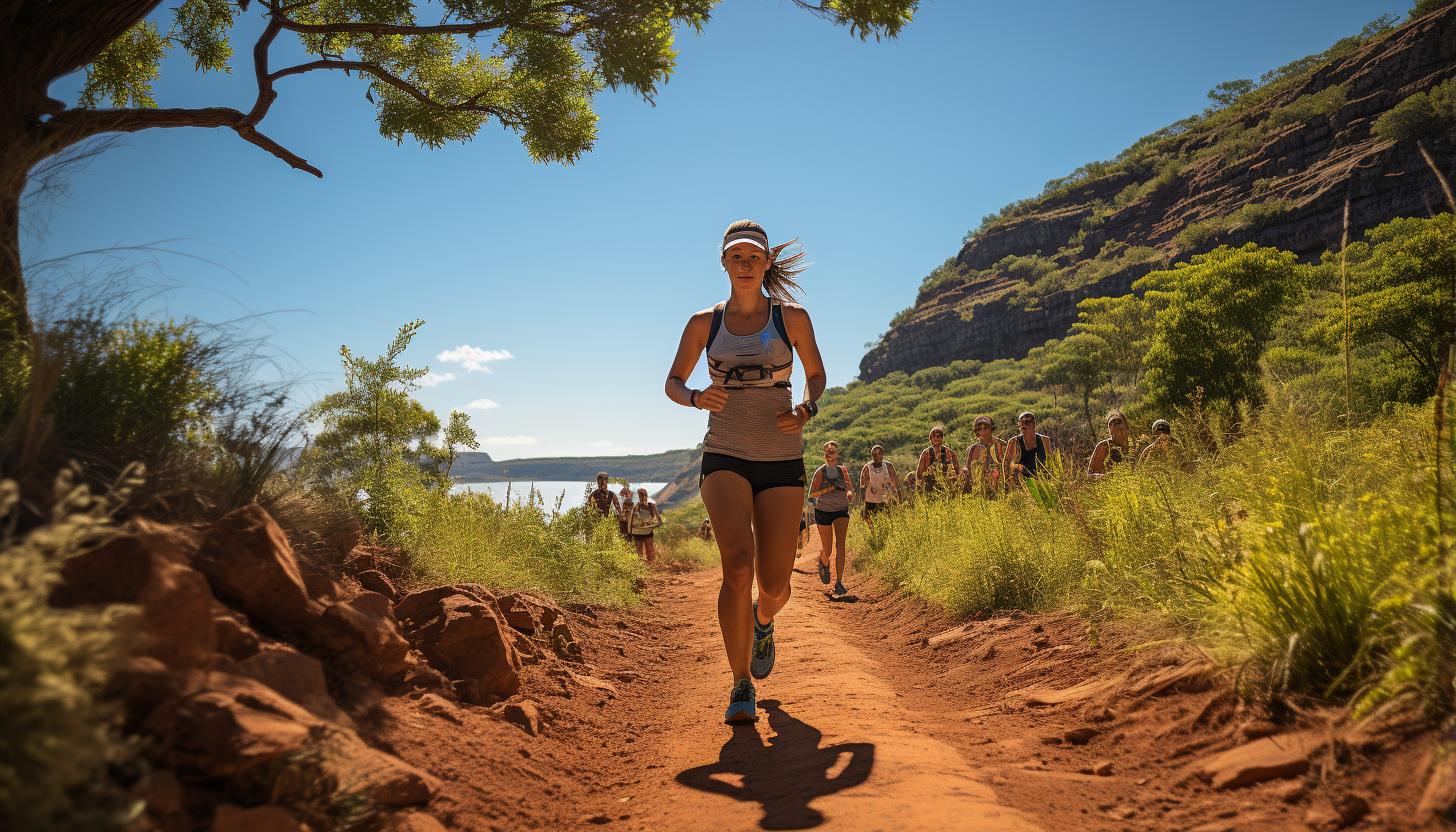How to Train for Your First 5K Race

Are you hesitant to sign up for your first 5K race? Don’t worry! This article will guide you through the training process, helping you set goals, design a plan, and build endurance.
You’ll learn how to incorporate speed workouts and prepare mentally for race day. Whether you’re a beginner or just looking to improve your performance, this step-by-step guide will provide the motivation and instruction you need to conquer your first 5K race.
Get ready to lace up those running shoes and start training!
Setting Your Goals

Now that you’ve decided to train for your first 5k race, it’s time to start setting your goals. Goal setting is an important part of any training program as it gives you something to work towards and helps keep you motivated throughout the process.
When setting your goals, it’s important to make them specific and realistic. For example, instead of saying ‘I want to run faster,’ try setting a goal like ‘I want to improve my 5k time by 2 minutes.’ This gives you a clear target to aim for and allows you to track your progress more effectively.
Staying motivated can be challenging, especially when faced with obstacles or setbacks along the way. One way to stay motivated is by breaking your overall goal into smaller milestones. Celebrate each milestone achieved, whether it’s running for longer periods of time or reaching a certain distance. Another effective strategy is finding a training buddy or joining a running group. Having someone else who shares similar goals can provide support and accountability.
As you set your goals and find ways to stay motivated, it’s important to remember that everyone’s journey is different. Be patient with yourself and enjoy the process. With dedication and perseverance, you will be well on your way towards achieving your goal of completing your first 5k race.
Now that you have set your goals and found ways to stay motivated, it’s time to move on to designing your training plan.
Designing Your Training Plan

When designing your training plan for a 5k race, it’s important to consider your current fitness level and goals. Creating a balanced schedule is crucial to ensure you’re adequately preparing both your body and mind for the race. Here’s an example of a well-rounded training plan:
| Week | Monday | Wednesday | Friday |
|---|---|---|---|
| 1 | Rest | Run 2 miles | Cross-train |
| 2 | Run 3 miles | Rest | Cross-train |
| 3 | Run 2 miles | Run 4 miles | Rest |
| 4 | Cross-train | Run 3 miles | Rest |
Remember, consistency is key. Gradually increase your mileage each week, allowing your body time to adapt and recover. Additionally, choosing the right running shoes is vital to prevent injuries and enhance performance. Visit a specialty running store to get properly fitted by experts who can assess your foot type and gait pattern. They will recommend shoes that provide adequate support and cushioning. Don’t forget to break in your new shoes gradually during shorter runs before wearing them on longer training sessions.
Building Endurance and Stamina

To build endurance and stamina, it’s important to gradually increase your mileage each week. This will help improve your cardiovascular fitness and prepare you for your first 5k race. Start by setting realistic goals and gradually increasing the distance of your runs. Push yourself, but listen to your body and avoid overtraining.
In addition to increasing your mileage, proper nutrition is crucial for building endurance. Make sure you are fueling your body with the right nutrients before and after your workouts. Focus on consuming a balanced diet that includes lean proteins, whole grains, fruits, and vegetables. Stay hydrated by drinking plenty of water throughout the day.
To keep yourself motivated during training, mix up your running routine. Incorporate interval training or hill sprints to challenge yourself and improve both speed and endurance. Join a running group or find a training partner who can provide support and encouragement along the way.
Incorporating Speed Workouts

Incorporating speed workouts can help improve both your speed and endurance, allowing you to become a faster and more efficient runner. When it comes to increasing your running pace, two key types of workouts to include in your training are interval training and tempo runs.
Interval training involves alternating between periods of high-intensity running and recovery. This type of workout helps improve your anaerobic capacity and increases your overall speed. Start by warming up with a light jog, then run at a fast pace for a set distance or time, followed by a slower recovery period. Repeat this cycle several times during your workout session.
Tempo runs are another effective way to build speed. These runs involve maintaining a comfortably hard pace for an extended period of time. The goal is to push yourself just outside of your comfort zone without going all-out sprinting. Tempo runs train your body to sustain a faster pace over longer distances, improving both endurance and race performance.
By incorporating these speed workouts into your training regimen, you’ll be able to challenge yourself physically and mentally, pushing past any previous limits you may have had.
Now that you’ve worked on building strength and endurance through speed workouts, it’s time to focus on preparing mentally and physically for race day…
Preparing Mentally and Physically for Race Day

Now that you’ve built strength and endurance, it’s important to focus on preparing both mentally and physically for race day. The mental aspect of running is just as crucial as the physical side.
One technique that can help you mentally prepare for your 5k race is visualization. Close your eyes and imagine yourself crossing the finish line, feeling strong and accomplished. Visualize each step of the race, from the start to the finish, envisioning yourself maintaining a steady pace and pushing through any challenges that may arise.
Another key aspect of race day preparation is nutrition. You want to make sure you’re fueling your body properly before the big day. A balanced meal consisting of carbohydrates for energy, protein for muscle repair, and healthy fats will help ensure you have enough energy to sustain you throughout the race. Avoid trying new foods or drinks on race day to prevent any unexpected digestive issues.
In addition to proper nutrition, hydration is essential. Drink plenty of water in the days leading up to the race and continue hydrating during the event itself. Staying hydrated will help maintain your energy levels and prevent cramping.
By incorporating visualization techniques into your training routine and paying attention to your race day nutrition, you’ll be setting yourself up for success come race day.
Remember to stay positive, trust in your training, and enjoy every moment of this exciting journey towards completing your first 5k!
Conclusion
Congratulations on completing your first 5k race! You’ve come a long way from setting your goals and designing a training plan to building endurance and incorporating speed workouts.
Like a caterpillar transforming into a beautiful butterfly, you have transformed yourself into a stronger and more resilient runner.
Remember, the journey is just as important as the destination. So keep spreading your wings, pushing yourself further, and always strive for greatness. The sky is the limit!
Keep running towards your dreams!






